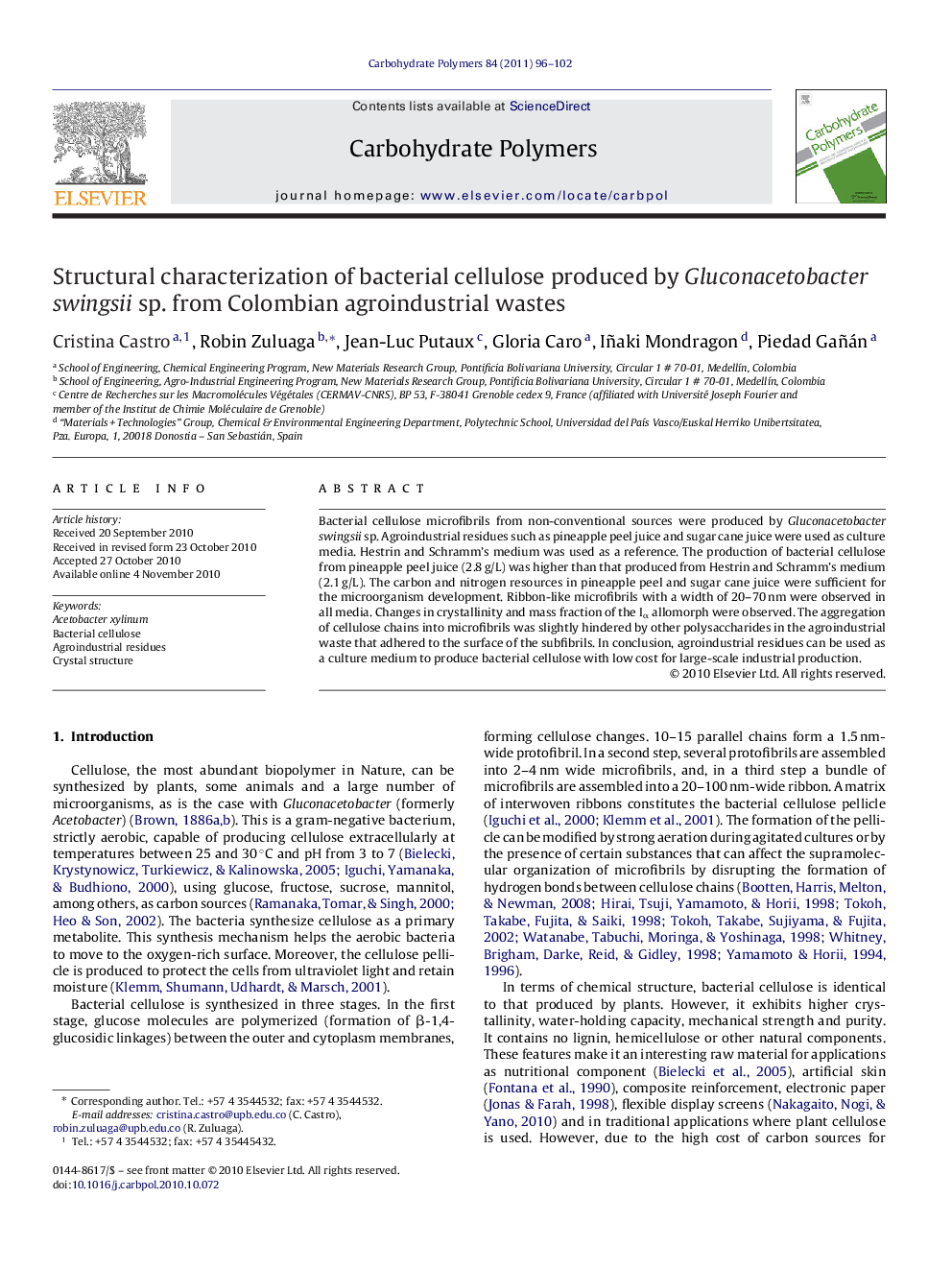| Article ID | Journal | Published Year | Pages | File Type |
|---|---|---|---|---|
| 10604614 | Carbohydrate Polymers | 2011 | 7 Pages |
Abstract
Bacterial cellulose microfibrils from non-conventional sources were produced by Gluconacetobacter swingsii sp. Agroindustrial residues such as pineapple peel juice and sugar cane juice were used as culture media. Hestrin and Schramm's medium was used as a reference. The production of bacterial cellulose from pineapple peel juice (2.8 g/L) was higher than that produced from Hestrin and Schramm's medium (2.1 g/L). The carbon and nitrogen resources in pineapple peel and sugar cane juice were sufficient for the microorganism development. Ribbon-like microfibrils with a width of 20-70 nm were observed in all media. Changes in crystallinity and mass fraction of the Iα allomorph were observed. The aggregation of cellulose chains into microfibrils was slightly hindered by other polysaccharides in the agroindustrial waste that adhered to the surface of the subfibrils. In conclusion, agroindustrial residues can be used as a culture medium to produce bacterial cellulose with low cost for large-scale industrial production.
Related Topics
Physical Sciences and Engineering
Chemistry
Organic Chemistry
Authors
Cristina Castro, Robin Zuluaga, Jean-Luc Putaux, Gloria Caro, Iñaki Mondragon, Piedad Gañán,
